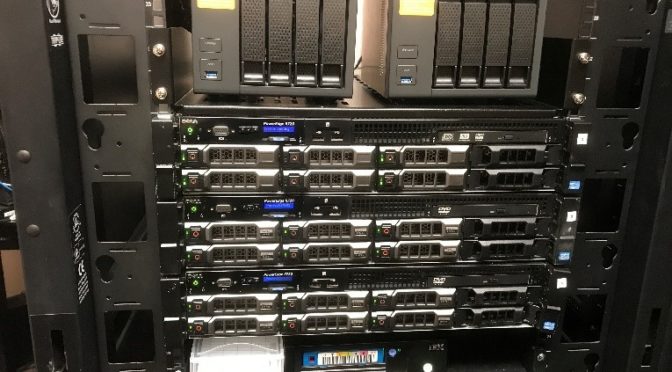RTC recently completed a huge store systems upgrade at TSC Stores Canada, a Canadian owned and operated retailer with 49 corporate stores. This all-encompassing deal included replacement of their legacy WINDSS POS store system with RTC’s StoreMS POS. The implementation was completed in 2016 and immediately provided TSC stores with a fast, easy to use POS application that is able to provide the fast thru put and features like mobile POS, that today’s retailers need.
No longer hampered by systemic restrictions of a legacy WINDSS system, TSC’s merchandising team began to focus on growing their customer loyalty thru a new and exciting marketing program that includes a variety of new sales promotions. The only unanswered question was what “tool” they would use to manage the program. TSC’s first priority was to move beyond their paper based card program which was difficult to administer. Furthermore, their legacy solution did not allow any tracking or reporting, which is a vital part of any marketing effort.
After an extensive review, RTC’s Customer Loyalty Rewards(CLR) solution was selected to provide the merchants the ability to create unique and targeted promotions and powerful marketing campaigns to drive sales in the Equine and Pet Food categories. CLR is a real-time points and rewards loyalty program that is designed to be simple to use and require little to no training for store staff. The solution supports the utilization of a customer loyalty card that contains a barcode. When the card is scanned, the POS sends a request to CLR and retrieves the club, point history and available rewards for that customer. The available rewards can be redeemed in the transaction and if they are not redeemed, they are printed on the receipt. With capital dollar spending always scrutinized at TSC, RTC was able to implement CLR under a new SaaS model, which allows TSC to have full access to the solution, on their box, with no capital license fees.
After several intense design sessions with the TSC team, the application was installed, configured, tested and deployed in a few months. TSC already had a pretty robust customer database, so their requirements for the solution were straightforward, the application had to be easy to train and deploy and simple for merchants to manage. The application had to be quantity driven with an uncomplicated redemption process and instantly provide the reward to the customer within the same transaction. Furthermore, the application had to be integrated into the POS and seamless to the customer.
Rewarding shoppers instantly, and allowing them to use their reward in the same transaction, builds excitement and increases customer satisfaction. TSC utilizes a (Buy x, get x free) model that is simple to manage for the store and easy for customers to understand. Customers build up the number of bags purchased and when the quantity threshold is met, the next bag is free is the driving message RTC received from TSC as the project started up.
CLR exceeded all their expectations. Six weeks after the implementation, TSC was able to sign up and or convert more than 6,300 customers and launch a total of 13 new clubs. “RTC offered us a solution through our POS systems in store that would allow for easy sign-up, tracking, reporting, and great flexibility to add clubs as the program grows, says Susan Ross Director, IT & Capability Building at TSC Stores. “We are very pleased so far, and our sales and margin are close to our expectations. Shoppers are happy with the program so far, and cashiers have found it very simple to sign up new customers. The RTC team is always great to work with! They were able to meet our tight timelines and we haven’t had any major issues since we went live in all stores. Having the program bolt onto our existing POS system has allowed us to create reporting and tracking to fully understand the return of the program and help to lay out next steps,” added Susan.
“Many retailers reward all shoppers the same, but those programs come at the cost of margins. At the end of the day, margin is what it’s all about”, says Jeff Cook Director Store Systems RTC. “If you can increase sales in a positive way, by rewarding your best and most loyal shoppers, while maintaining margins, that is a program you want to keep”, says Cook. “CLR gives the marketing organization more control and flexibility than they ever had to design creative targeted campaigns around specific product offerings and delivered a significant ROI”.
 National Stores, a California-based retailer with more than 350 locations across 22 states, operating multiple brands including Fallas, Fallas Paredes and Fallas Discount Stores, recently inked a deal with RTC Consulting to be their strategic partner for JDA MMS technical support.
National Stores, a California-based retailer with more than 350 locations across 22 states, operating multiple brands including Fallas, Fallas Paredes and Fallas Discount Stores, recently inked a deal with RTC Consulting to be their strategic partner for JDA MMS technical support.


 Ecommerce fulfillment is a major challenge in any omni-channel operation. Allowing shoppers to buy online is great, but having a process in place to be able to fulfill online orders from anywhere, is true omni-channel.
Ecommerce fulfillment is a major challenge in any omni-channel operation. Allowing shoppers to buy online is great, but having a process in place to be able to fulfill online orders from anywhere, is true omni-channel.
